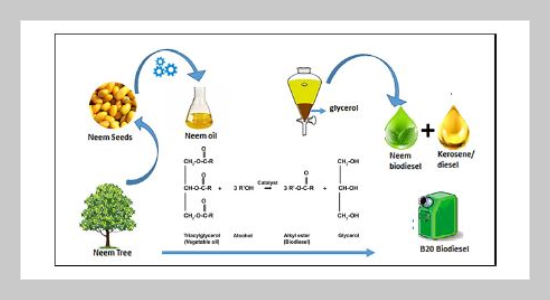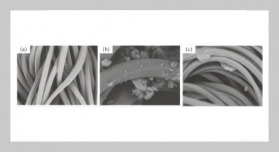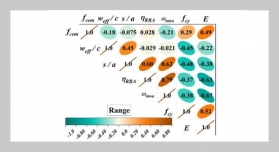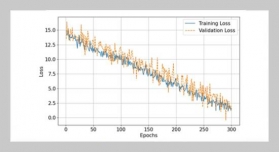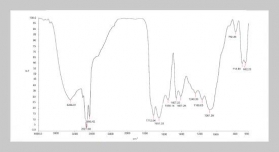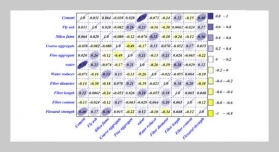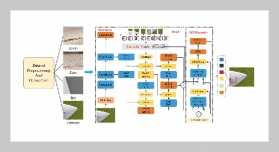Mehmood Ali 1, Amtul Qayoom2, Zehra Ghulam2, Shahab Imran3, MNAM Yusoff3, M.A. Kalam4, Omar Mahmoud5, and A.S. El-Shafay6
1Department of Environmental Engineering, NED University of Engineering and Technology, Karachi-75270, Pakistan
2Department of Chemistry, NED University of Engineering and Technology, Karachi-75270, Pakistan
3Centre of Energy Science, Department of Mechanical Engineering, University of Malaya, Kuala Lumpur 50603, Malaysia
4University of Technology Sydney, Australia
5Petroleum Engineering, Faculty of Engineering and Technology, Future University in Egypt, New Cairo 11845, Egypt
6Department of Mechanical Engineering, College of Engineering, Prince Sattam bin Abdulaziz University, Alkharj, 16273, Saudi Arabia
Received:
April 8, 2022
Accepted:
June 14, 2022
Publication Date:
November 2, 2022
Copyright The Author(s). This is an open access article distributed under the terms of the Creative Commons Attribution License (CC BY 4.0), which permits unrestricted use, distribution, and reproduction in any medium, provided the original author and source are cited.
Download Citation: ||https://doi.org/10.6180/jase.202308_26(8).0011
ABSTRACT
Due to the poor cold flow behaviour of biodiesel in winter, it tends to form solidifying gel in many cold regions across the world, making it challenging to use as an alternative fuel in diesel engines. This research investigation was conducted to investigate the comparative impact on cold flow parameters of biodiesel produced from Azadirachta indica (Neem oil) by blending with petroleum-based fuels and natural organic solvents. The B20 blends with kerosene showed significant improvement in CP, PP, and CFPP to -10 °C, -19 °C, and -20 °C, respectively. B20* blend enhanced the CP, PP and CFPP to 8 °C, 2 °C, and 6 °C respectively, while mixed kerosene/ diesel B20** blend improved CFPP, CP and PP by -4.5 °C, -7 °C and -8 °C respectively. Blend (B20T10) with natural turpentine oil improved CP, PP, and CFPP to 7 °C, 5 °C, and -2 °C, respectively. Diethyl ether and n-butanol did not show substantial improvement in biodiesel cold flow characteristics. The ester functional group in the biodiesel from ATR-FTIR spectral peaks was found at 1740.2 cm−1 denotes C=O, i.e., carbonyl group confirmation in the presence of ester linkage. The cost analysis of B20y** and B20T10 were found to be USD 0.747 and USD 0.782 per L, respectively in comparison to that of petroleum diesel, USD 0.770 per L. Neem biodiesel production showed a positive net energy balance of 14.28%. According to the current study, it is recommended to use blended mixed kerosene/diesel (B20**) and biodiesel blend with turpentine oil (B20T10) in diesel engines with suitable physico-chemical and cold flow properties in compliance with ASTM D6571standard.
Keywords:
Biodiesel; Turpentine oil; Cold flow properties; Azadirachta indica; Kerosene; n- butanol
REFERENCES
- [1] P. Verma, M. Sharma, and G. Dwivedi, (2016) “Evaluation and enhancement of cold flow properties of palm oil and its biodiesel" Energy Reports 2: 8–13.
- [2] H. Yang, X.-H. Li, M.-F. Mu, G.-Y. Kou, et al., (2017) “Comparative performance and emissions study of a direct injection diesel engine using diesel fuel and soybean biodiesel" Journal of Applied Science and Engineering 20(2): 201–210.
- [3] G. Kumari and S. K. Karmee. “Thermochemical routes applying biomass: a critical assessment”. In: Handbook of Biofuels. Elsevier, 2022, 435–451.
- [4] C. Campbell, (1992) “The depletion of oil" Marine and petroleum geology 9(6): 666–671.
- [5] C. A. L. Cardoso, M. E. Machado, and E. B. Caramão, (2016) “Characterization of bio-oils obtained from pyrolysis of bocaiuva residues" Renewable Energy 91: 21–31.
- [6] K. Abed, M. Gad, A. El Morsi, M. Sayed, and S. A. Elyazeed, (2019) “Effect of biodiesel fuels on diesel engine emissions" Egyptian journal of petroleum 28(2): 183–188.
- [7] S. Bhatia. Advanced renewable energy systems,(Part 1 and 2). CRC Press, 2014.
- [8] G. Dwivedi and M. Sharma, (2014) “Impact of cold flow properties of biodiesel on engine performance" Renewable and Sustainable Energy Reviews 31: 650–656.
- [9] M. Ali, B. Naqvi, and I. A. Watson, (2018) “Possibility of converting indigenous Salvadora persica L. seed oil into biodiesel in Pakistan" International Journal of Green Energy 15(7): 427–435.
- [10] M. Serrano, R. Oliveros, M. Sánchez, A. Moraschini, M. Martınez, and J. Aracil, (2014) “Influence of blending vegetable oil methyl esters on biodiesel fuel properties: oxidative stability and cold flow properties" Energy 65: 109–115.
- [11] P. Berman, S. Nizri, and Z.Wiesman, (2011) “Castor oil biodiesel and its blends as alternative fuel" biomass and bioenergy 35(7): 2861–2866.
- [12] A. Demirba¸s, (2008) “Production of biodiesel from algae oils" Energy Sources, Part A: Recovery, Utilization, and Environmental Effects 31(2): 163–168.
- [13] S. Nainwal, N. Sharma, A. S. Sharma, S. Jain, and S. Jain, (2015) “Cold flow properties improvement of Jatropha curcas biodiesel and waste cooking oil biodiesel using winterization and blending" Energy 89: 702–707.
- [14] J. Milano, H. C. Ong, H. Masjuki, W. Chong, M. K. Lam, P. K. Loh, and V. Vellayan, (2016) “Microalgae biofuels as an alternative to fossil fuel for power generation" Renewable and Sustainable Energy Reviews 58: 180–197.
- [15] P. Pramanik, P. Das, and P. Kim, (2012) “Preparation of biofuel from argemone seed oil by an alternative cost-effective technique" Fuel 91(1): 81–86.
- [16] L. Wen, Y. Wang, D. Lu, S. Hu, and H. Han, (2010) “Preparation of KF/CaO nanocatalyst and its application in biodiesel production from Chinese tallow seed oil" Fuel 89(9): 2267–2271.
- [17] A. I. El-Batal, A. A. Farrag, M. A. Elsayed, and A. M. El-Khawaga, (2016) “Biodiesel production by Aspergillus niger lipase immobilized on barium ferrite magnetic nanoparticles" Bioengineering 3(2): 14.
- [18] M. Hazrat, M. G. Rasul, M. Mofijur, M. Khan, F. Djavanroodi, A. Azad, M. M. Bhuiya, and A. Silitonga, (2020) “A mini review on the cold flow properties of biodiesel and its blends" Frontiers in Energy Research 8: 598651.
- [19] I. Monirul, H. Masjuki, M. Kalam, N. Zulkifli, H. Rashedul, M. Rashed, H. Imdadul, and M. Mosarof, (2015) “A comprehensive review on biodiesel cold flow properties and oxidation stability along with their improvement processes" RSC advances 5(105): 86631–86655.
- [20] A. A. Mohammed, A. R. Al-Obaidi, and A. A. AlTabbakh. “Experimental investigation of using kerosene biodiesel blend as an alternative fuel in diesel engines”. In: Journal of Physics: Conference Series. 1279.1.IOP Publishing. 2019, 012022.
- [21] P. Yogesh, D. Chandramohan, et al., (2022) “Combustion, Performance and Emissions Characteristics of CRDI engine Fueled with Biodiesel, Ethanol & Butanol blends at Various Fuel Injection strategies" Journal of Applied Science and Engineering 25(6): 971–977.
- [22] P. Dubey and R. Gupta, (2018) “Influences of dual biofuel (Jatropha biodiesel and turpentine oil) on single cylinder variable compression ratio diesel engine" Renewable Energy 115: 1294–1302.
- [23] L. Karikalan and M. Chandrasekaran, (2017) “Performance and pollutants analysis on diesel engine using blends of Jatropha Biodiesel and Mineral Turpentine as fuel" International Journal of Environmental Science and Technology 14(2): 323–330.
- [24] S. Sivalakshmi and T. Balusamy, (2013) “Effect of biodiesel and its blends with diethyl ether on the combustion, performance and emissions from a diesel engine" Fuel 106: 106–110.
- [25] M. Lapuerta, J. Rodrıguez-Fernández, D. Fernández-Rodrıguez, and R. Patiño-Camino, (2018) “Cold flow and filterability properties of n-butanol and ethanol blends with diesel and biodiesel fuels" Fuel 224: 552–559.
- [26] L. Karikalan and M. Chandrasekaran, (2017) “Performance and pollutants analysis on diesel engine using blends of Jatropha Biodiesel and Mineral Turpentine as fuel" International Journal of Environmental Science and Technology 14(2): 323–330.
- [27] M. H. Ali, M. Mashud, M. R. Rubel, and R. H. Ahmad, (2013) “Biodiesel from Neem oil as an alternative fuel for Diesel engine" Procedia Engineering 56: 625–630.
- [28] H. J. Berchmans and S. Hirata, (2008) “Biodiesel production from crude Jatropha curcas L. seed oil with a high content of free fatty acids" Bioresource technology 99(6): 1716–1721.


